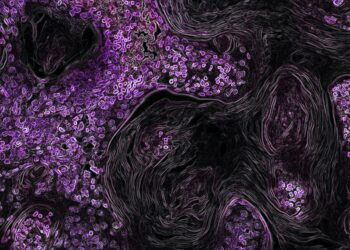In the realm of healthcare policy and healthcare system management, it’s evident that the world faces significant challenges in preparing for a potential H5N1 bird flu pandemic.
With current estimates suggesting that vaccine capacity would be far from adequate to protect a large share of the world’s population in the first year of an outbreak, the outlook is grim.
Initial indications of transmission between humans of H5N1—or any emerging influenza virus—would prompt an urgent initiative to manufacture substantial quantities of a vaccine, aimed at averting the widespread impact anticipated from a flu pandemic. To contextualize, the 2009 H1N1 pandemic resulted in approximately 250,000 deaths globally—a figure not uncommon during intense flu seasons.
However, this pales in comparison to the estimated 50 million to 100 million fatalities caused by the 191Should the H5N1 flu virus, or any novel influenza strain, begin to transmit between humans, it would initiate an urgent response to manufacture vaccines on a large scale in an attempt to limit the impact of a potential pandemic.
For perspective, while the 2009 H1N1 pandemic resulted in approximately 250,000 deaths globally—a figure that some severe flu seasons surpass—the 1918 Spanish flu claimed the lives of an estimated 50 million to 100 million individuals, significantly outstripping fatalities from COVID-19.
By prioritizing healthcare policy initiatives aimed at bolstering vaccine preparedness and investing in modern medicine and innovations in healthcare, we can better equip ourselves to mitigate the impact of future pandemics and protect global health.
On a positive note, there is substantial experience and capacity for influenza vaccine production worldwide; this process has been refined over decades. Regulatory frameworks are designed efficiently so that manufacturers can update vaccine formulations to target new viral strains without needing new approvals. In addition, the United States maintains a reserve of H5 vaccines thought to be effective against current strains affecting dairy cattle; however, supplies would not suffice for nationwide coverage.
Innovations in healthcare play a crucial role in addressing these challenges and enhancing pandemic preparedness.
In the case of a novel influenza virus such as H5N1, which is entirely new to human populations, it is anticipated that there would be no pre-existing immunity among individuals. Consequently, pandemic response planners operate under the assumption that two doses of vaccine will be necessary for adequate protection during the initial vaccination campaign against H5N1.
This contrasts with the 2009 H1N1 pandemic scenario where one dose proved sufficient due to its distant relation to a strain prevalent throughout much of the previous century; no similar expectation exists concerning efficacy with an emerging H5 pandemic.
The global capacity for producing influenza vaccines cannot meet the needs of mass vaccinations across the globe within the first year of a pandemic outbreak. Furthermore, vaccine production—commonly reliant on processes using hen’s eggs—requires several months per batch. This temporal lag presents significant challenges in responding promptly to an emerging health crisis.
The stark reality is that the global vaccine production infrastructure is simply not equipped to handle the demands of a widespread bird flu pandemic. With limited manufacturing capacity and an inability to rapidly scale up production, the chances of effectively vaccinating the millions of people at risk are slim at best.
Furthermore, even if enough vaccines were miraculously produced, the logistical challenges of distribution and administration would prove to be insurmountable. Developing countries, in particular, would struggle to access and deliver vaccines to their populations, leading to disproportionate levels of exposure and a higher death toll among the most vulnerable.
Given these capacity constraints, it is clear that the world is ill-prepared to face the threat of a H5N1 bird flu pandemic. The lack of foresight and investment in vaccine production and distribution infrastructure has left us vulnerable to a potential global health crisis of unprecedented proportions. As we grapple with the harsh reality of our limited capacity, one thing is certain – the specter of a bird flu pandemic looms large, with devastating consequences that could have been prevented with proper planning and investment.















